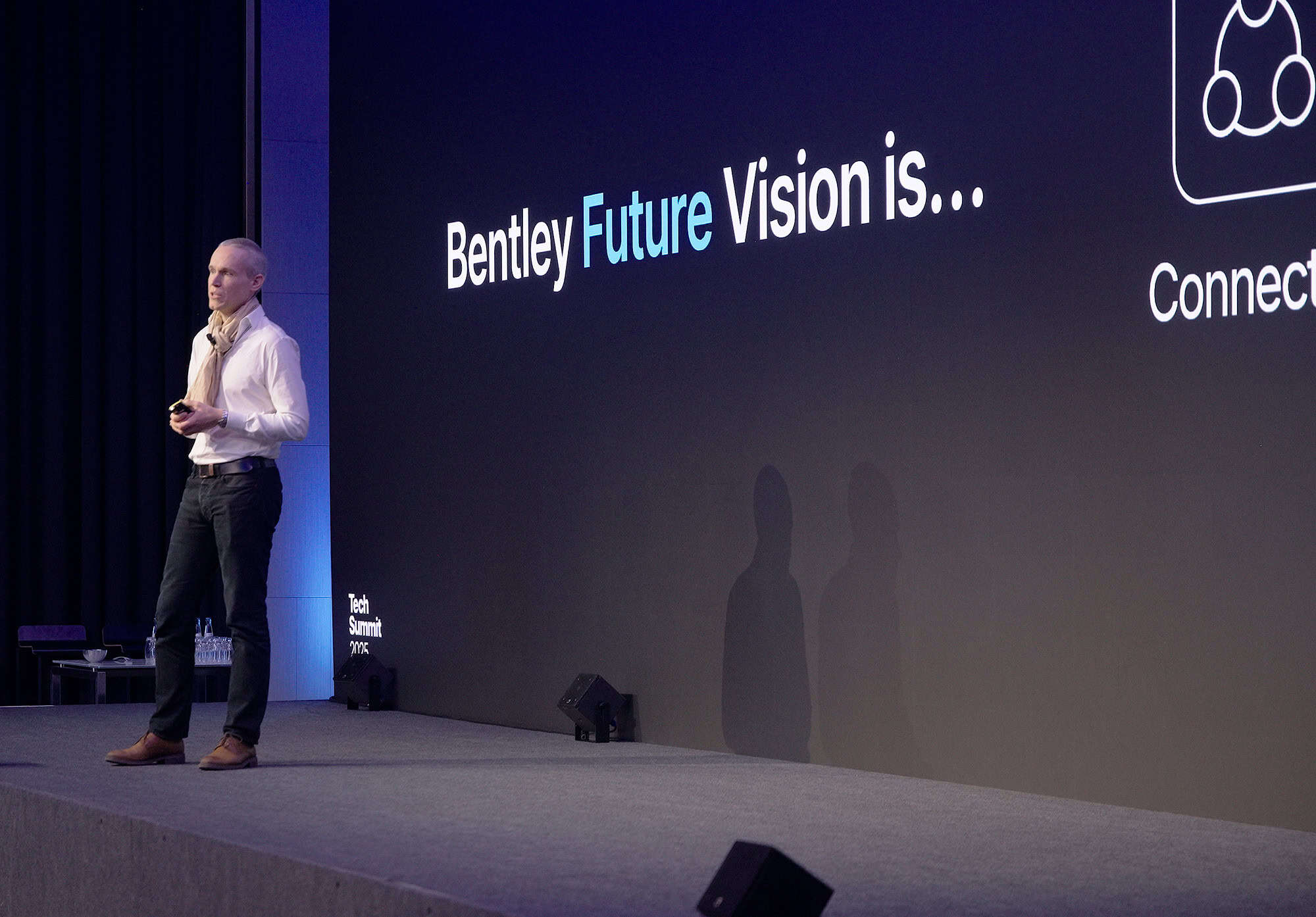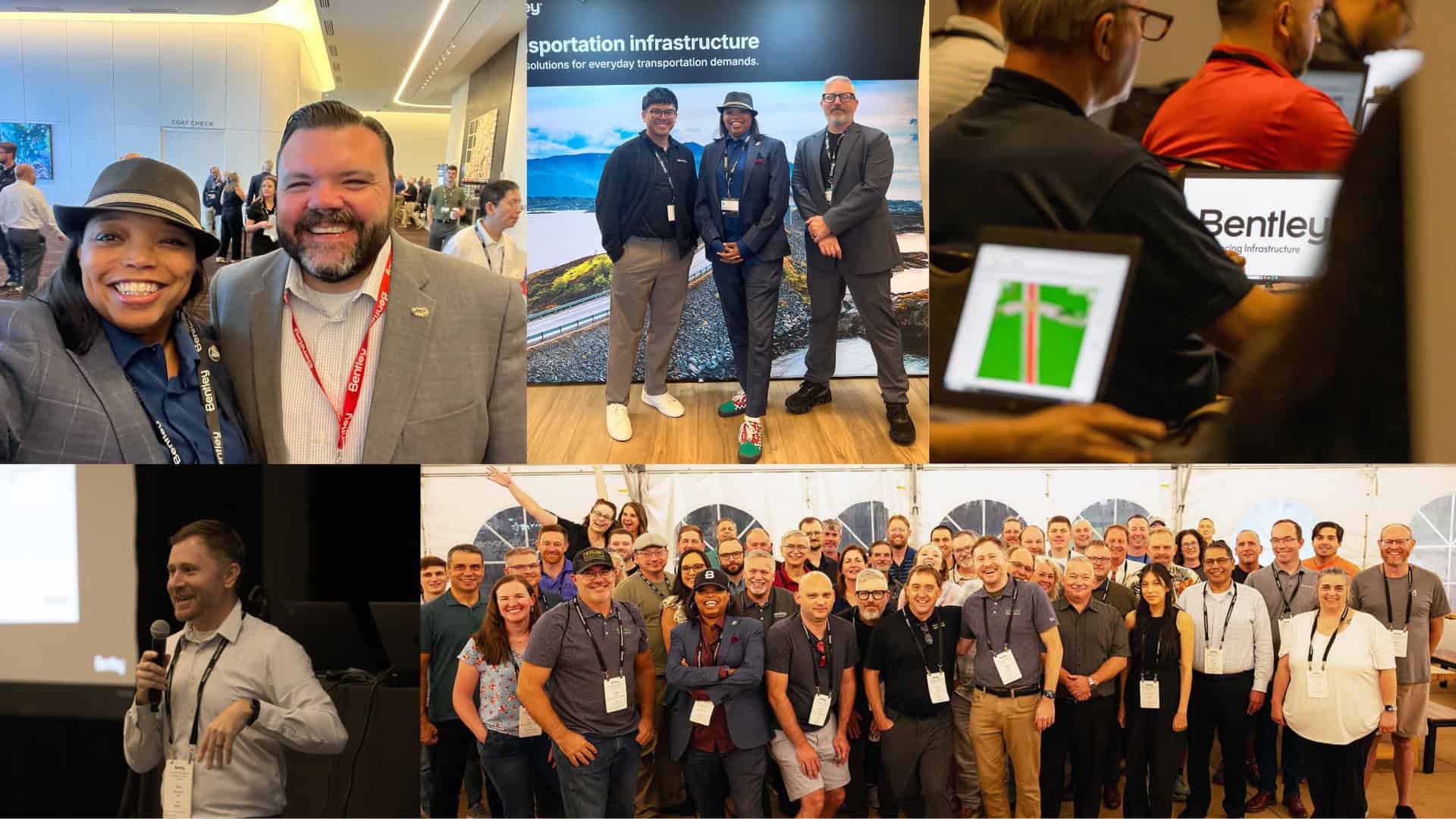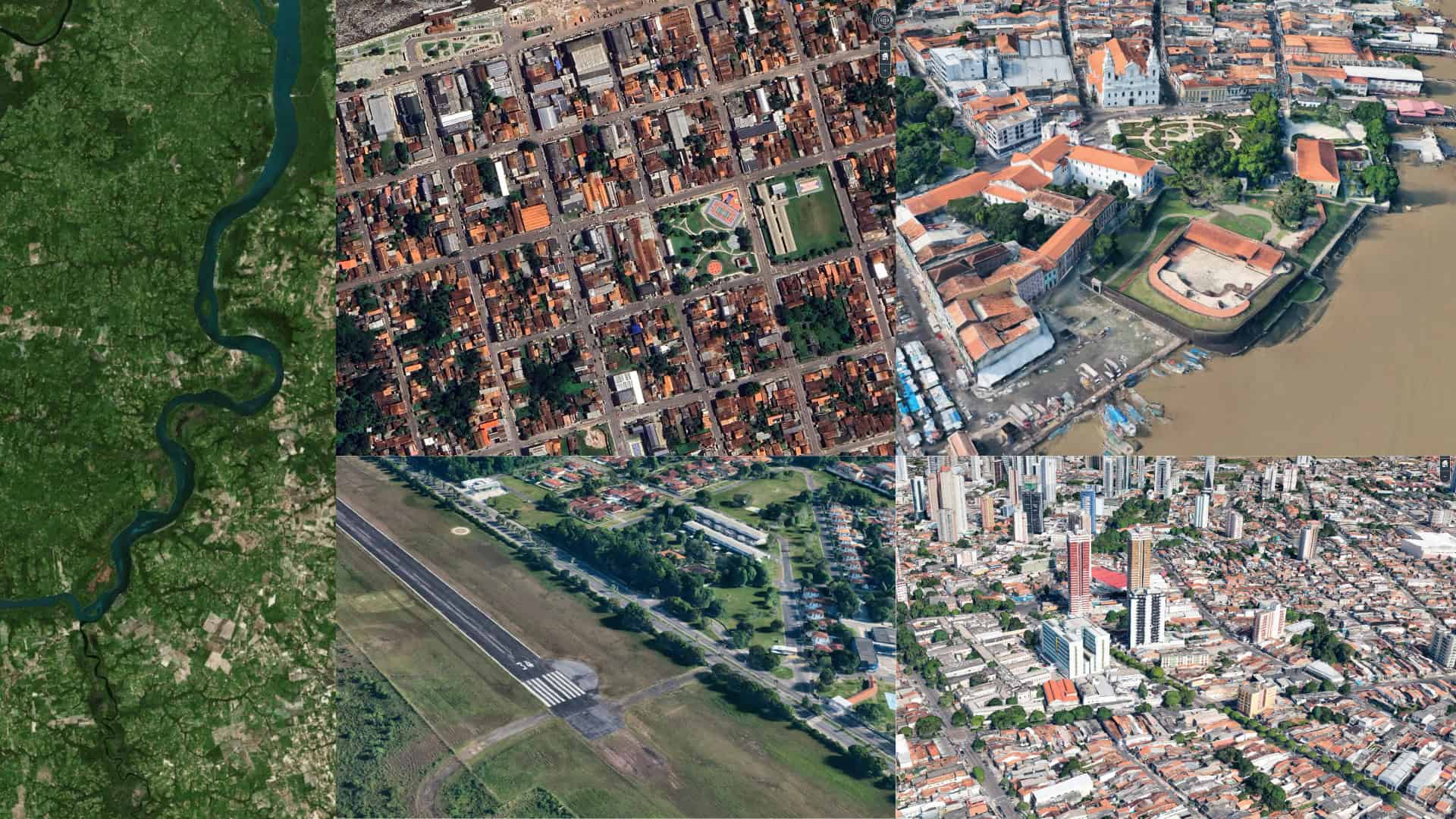For some people, lightning strikes more than once. Such was the case for Keith Bentley with MicroStation, the computer-aided design (CAD) software behind some of the world’s most ambitious infrastructure projects—from bridges and buildings to airports and power plants.
MicroStation has been pivotal in landmark projects, including Crossrail’s Elizabeth Line in London and the state-of-the-art Governor Mario M. Cuomo Bridge in New York, underscoring its critical role in shaping modern infrastructure. It also served as the foundation for innovation and drove the growth of Bentley Systems, the company that Keith Bentley founded and ran with his four brothers 40 years ago. Now publicly traded on the Nasdaq, Bentley is the leader in infrastructure engineering software with $1.2 billion in annual revenue.
Honey, I shrunk the mainframe
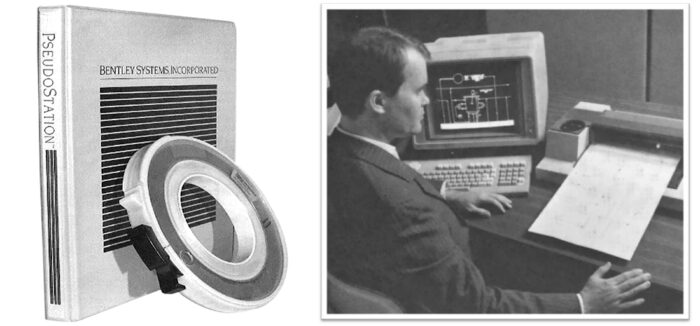 Bentley’s first commercial product, PseudoStation, left, and an engineer working on a computer-aided drafting (CAD) with MicroStation in 1986 on the right.
Bentley’s first commercial product, PseudoStation, left, and an engineer working on a computer-aided drafting (CAD) with MicroStation in 1986 on the right.Keith Bentley’s first lightning bolt of inspiration struck in the early 1980s, when hair was big and so were the expensive mainframe computers increasingly used in industrial design. At the time, engineering drawings were still largely done on paper, so the shift to CAD (then an acronym for computer-aided drafting) was already a big transition from traditional methods. Bentley envisioned supercharging that transition by developing software that would allow engineers and architects to modify technical drawings more easily and affordably.
In 1984, along with his brother Barry, he introduced PseudoStation to the industry. The software still required a connection to a powerful computer, but it allowed users to modify their designs using low-cost graphics terminals instead of expensive, highly specialized workstations.
The true breakthrough came in 1986, when Bentley successfully adapted PseudoStation for early personal computers, rebranding it as MicroStation. “The idea of performing the operations we did in PseudoStation on a computer dedicated to just one person was radical,” he recalls.
Right place, right time
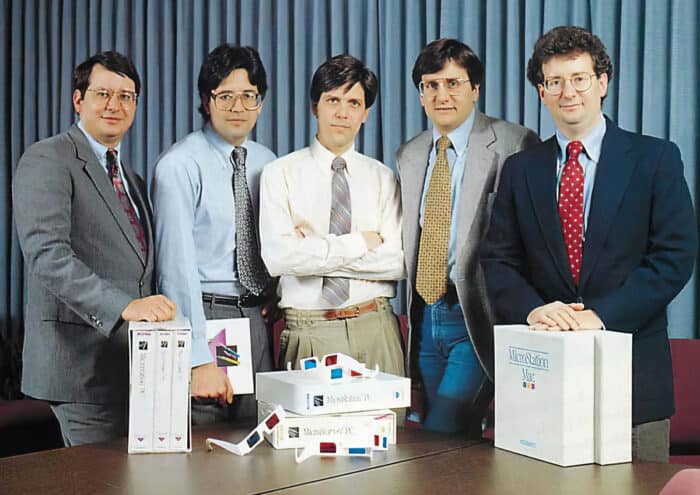 Pictured left to right: Scott, Ray, Keith, Barry, and Greg Bentley pose with boxes of MicroStation software.
Pictured left to right: Scott, Ray, Keith, Barry, and Greg Bentley pose with boxes of MicroStation software.Like Microsoft Windows, MicroStation was a mid-80s debut. It was a perfect storm of timing, opportunity, and product. “It was incredible to me that a small group could create something so useful that people would value it so highly. Ten years earlier or later, it wouldn’t have been possible,” he says.
Over the past four decades, MicroStation’s popularity has surged alongside its expanding capabilities, which include powerful 3D modeling, unparalleled data integration, and tools that enable seamless collaboration across teams.
If you build it, they will come
Today, MicroStation serves as the keystone in a comprehensive ecosystem of products, including cutting-edge digital twin technology. Digital twins are virtual replicas of real-world infrastructure assets, such as roads, bridges, and even entire cities. MicroStation allows users to manage the entire life of their projects—from design and construction to ongoing management and optimization, transforming how infrastructure is envisioned, built, and operated.
Designed from the outset with big data in mind, MicroStation excels in large-scale infrastructure projects, where complexity and scale can be daunting challenges. “You’re dealing with thousands of everything—people, objects, companies,” says Bentley. “The word ‘large’ is key to why MicroStation outperforms most other tools.”
MicroStation’s secret sauce
But MicroStation’s less obvious strength lies beyond its data-handling capabilities: it is also a versatile development platform that offers a suite of tools that engineers can customize to address their unique challenges. “We’ve always made it a priority to empower third-party developers to create solutions specific to their industries,” explains Bob Mankowski, a senior vice president at Bentley Systems who oversees MicroStation’s development.
In the 1990s, for example, a company called GEOPAK Corporation used the MicroStation platform to create a specialized civil engineering application called GEOPAK that included cutting-edge tools for road design. GEOPAK was so good, Bentley Systems would ultimately acquire the company, bringing these powerful civil engineering capabilities in-house.
A similar process has played out time and again at Bentley, keeping the company at the forefront and supporting its growth. Mankowski himself joined Bentley from one such company, where he was a civil engineer specializing in water networks and software design. “We now have lots of experts at Bentley with deep understanding of the industries served by MicroStation. We know what our users need,” he says.
Move fast and don’t break things
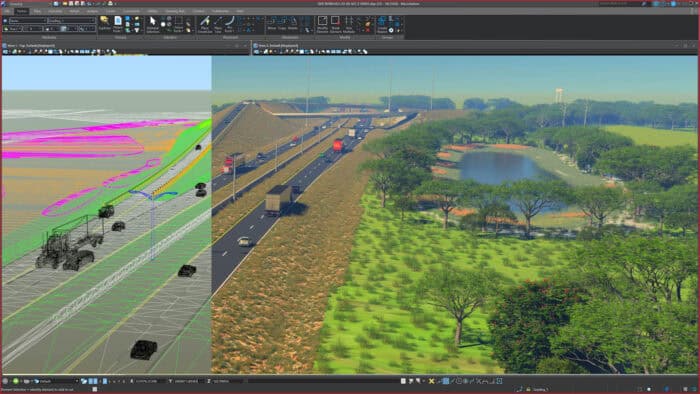 MicroStation software image displaying the split screen rendering of a road interchange.
MicroStation software image displaying the split screen rendering of a road interchange.Despite being at the forefront, the Bentley engineers working on MicroStation have always remembered the software’s roots. “Continuity is king,” says Keith Bentley. “The file format from the first version of MicroStation still works with the current version because we put a high priority on not breaking things.”
Alongside continuity is a firm commitment to openness. Today, MicroStation supports and integrates more than seven times the number of file formats as its competitors, cementing its position as the world’s most interoperable infrastructure design tool. “Making it as easy as possible to use MicroStation alongside other tools, even those of competitors, takes a lot of work,” Bentley says, “but our community of users really appreciate it.”
Relentless innovation has also been key to MicroStation’s evolution from a simple drafting tool to an advanced building information modeling platform. For example, two decades ago, MicroStation pioneered the integration of geospatial data into its design environment, enabling infrastructure to be designed within its geographical context. Back then, this data was basic—essentially points, lines, and polygons, Mankowski recalls. “Today, MicroStation integrates everything from photorealistic reality meshes to 3D point clouds, delivering stunningly accurate visuals, enabling engineers to design with unprecedented precision.”
(In September, Bentley acquired the 3D geospatial company Cesium. Cesium has built a powerful open platform for creating 3D geospatial applications, and the company’s 3D Tiles open standard has been widely adopted. “A 3D geospatial view is the most intuitive way for owner-operators and engineering services providers to search for, query and visualize information about infrastructure networks and assets,” says Bentley CEO Nicholas Cumins.)
Speaking the software industry’s language
MicroStation 2024, which launched this July, is a prime example of its ongoing innovation. This release streamlines real-time collaboration, addressing a critical issue in large projects: conflicting changes made by different team members. The latest version allows teams to see and synchronize design changes in real time, enabling faster problem-solving and reducing rework.
The new version of MicroStation also incorporates additional live-streamed geographical data, to provide high-resolution context for any project. “When you’re about to build a multibillion-dollar infrastructure project, having the most accurate, up-to-date geographic data is crucial,” says Molly Brown, director of product management for MicroStation.
And MicroStation now speaks Python, the world’s most popular programming language, unlocking unprecedented levels of customization and automation. “Need 500 guardrail posts uniquely placed on your bridge? Just use a snippet of code, and the placement is automated, making your job ten times easier,” says Brown.
The power of the cloud
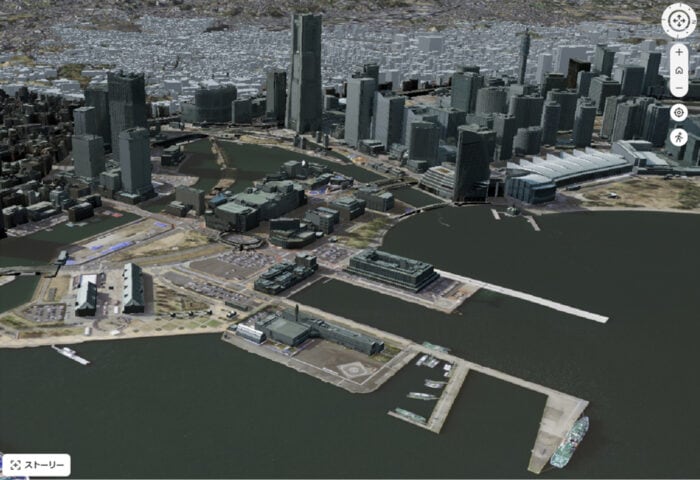 Using MicroStation, large amounts of data was processed to create realistic 3D city simulations for Project PLATEAU, Japan’s initiative to develop digital twins for 500 cities across the country by 2027.
Using MicroStation, large amounts of data was processed to create realistic 3D city simulations for Project PLATEAU, Japan’s initiative to develop digital twins for 500 cities across the country by 2027.If Keith Bentley’s first lightning bolt hit with the advent of PCs, his second lightning bolt came, appropriately enough, from the cloud. “In this era of virtually limitless bandwidth and computing power, an engineer’s output shouldn’t just be a set of drawings, but instead a digital model used not only for construction, but also to optimize ongoing asset performance,” he says.
This is where Bentley’s digital twins take center stage. Bentley’s iTwin Platform provides the foundation for building infrastructure digital twins. It allows users to integrate real-time data and analytics within virtual representations of physical assets and processes and optimize performance throughout an asset’s entire lifespan. In a bridge or dam project, for example, a digital twin can monitor wear and tear, predict maintenance needs, and simulate various stress scenarios, enabling engineers to make informed decisions at every stage.
“The seamless integration of MicroStation with our digital twins is revolutionizing how infrastructure is designed, built, and operated,” says Mankowski. And just like the cloud, Bentley’s digital twins scale without limits—from a single building to a billion-dollar upgrade to a water treatment plant; from a city to an entire nation.
Eying AI
And the lightning just keeps coming, most recently with the explosion in the power of artificial intelligence. “Python is the language of AI and machine learning,” Brown says. “Imagine the possibilities for the future of MicroStation.”
As always, Keith Bentley sees that future: “Forty years ago, I was awestruck by the opportunity to deliver something so useful in MicroStation. I feel that same excitement now.” He sees AI transforming the way that infrastructure designers tackle complex challenges. “There will come a day when it’ll seem quaint to solve any problem without an AI assistant,” he says.
Bentley Systems looks to the coming decades with the same commitment to user-focused innovation that has inspired such loyalty across infrastructure industries. In a rapidly evolving technology landscape, the MicroStation story remains a testament to the power of vision and opportunity—and always being ready for that next lightning strike.
Over the last 40 years, our colleagues and software have empowered engineers and communities and helped improve the quality of life around the world.
Bonus material: Founded in 1984 by the Bentley brothers, Bentley’s history reflects the digital evolution of infrastructure—from the democratization of computer-assisted drafting (CAD) to the rise of infrastructure digital twins. Hear from Greg, Barry, Keith, and Ray Bentley about how it all began:

